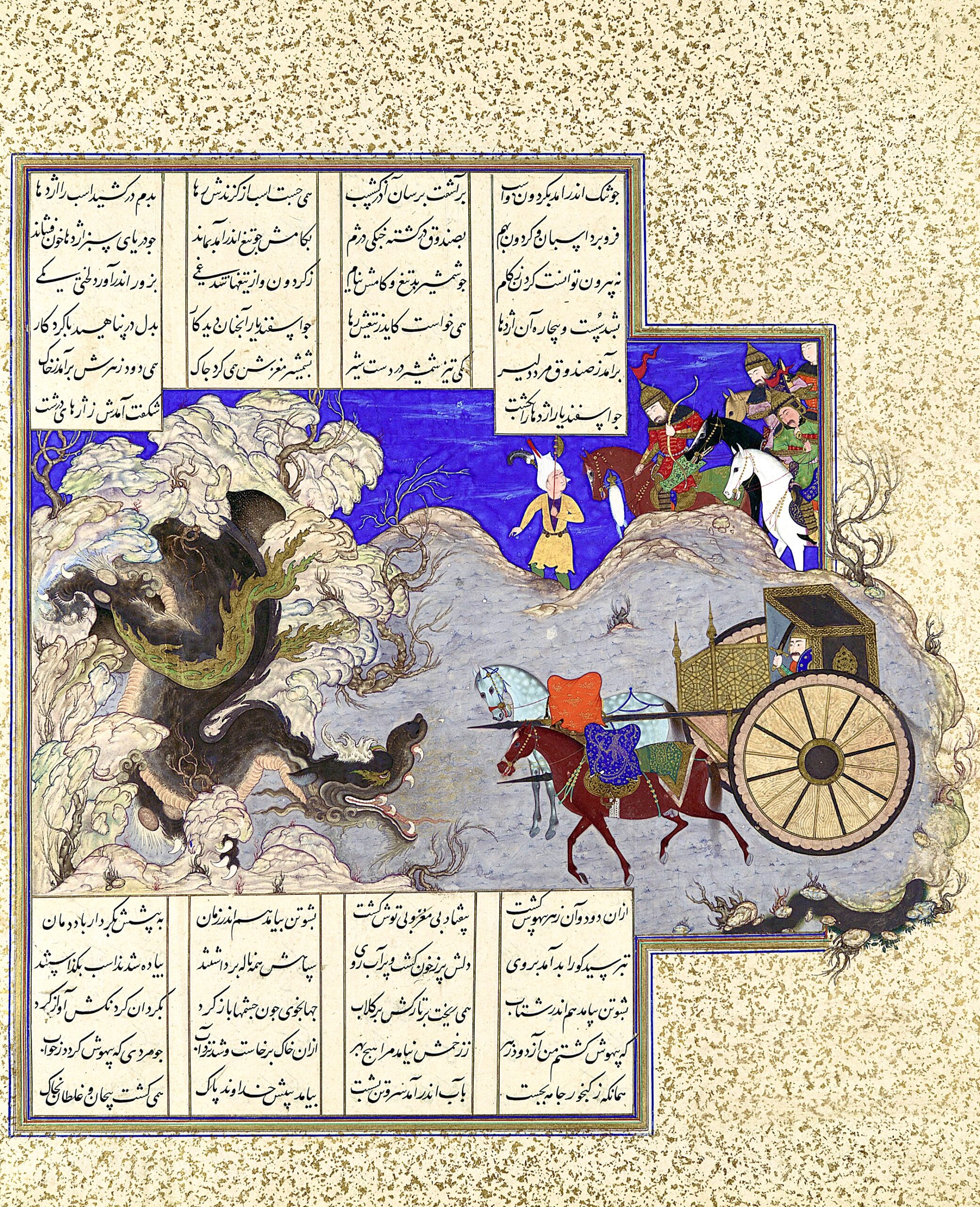The Shahname:
Introduction to the Iranian Epic
September 12 - October 31st
2025
Instructor: Ruben S. Nikoghosyan
Languages: English, Persian
Duration: 8 weeks (16 hours of instruction)
Frequency: 1 class per week (Fridays)
Duration of a Session: 2 hours
Deadline for Applications: September 4th
Classes Start: September 12th (7:30pm Yerevan Time)
Location: Online (Zoom)
Required level of Persian: Intermediate
Text Edition: Abu’l Qasem Ferdowsi. The Shahnameh (The Book of Kings), Volume 5. Edited by Djalal Khaleghi-Motlagh. New York.
Selected Story:
- Rostam va Esfandyār
Participation Fee:
- 8 Week: 250 USD (220 USD for applications before August 15th)
Registration: To apply, please click the “Apply” button above. Complete all required fields and submit. Accepted applicants will receive further instructions on participation.
Note: All materials will be provided by the instructor
It took 30 years for Ferdowsi to write his masterpiece, but one does not need 30 years to read the Shahnāme, despite its daunting size. The key to understanding the Shahname lies in mastering its language — its grammar, words, and syntax. The Shahname is beautiful, elegant, inspiring, and wise, with a sophisticated simplicity that few texts can achieve. Yet, behind its simple and straightforward exterior, it hides centuries — nay, millennia — of culture and history, waiting to be uncovered by the gentle brush of a philologist.
This course is designed to do exactly that, equipping participants with the linguistic, philological, and literary tools needed to engage with the Shahname — a treasure trove of subtle poetry, Iranian philosophy, and epic.
Course Overview
This course is designed to equip participants with the tools needed for independent study of the Shahname after its completion. The readings, selected from various stories, provide participants with a deeper understanding of the Shahname’s content. These readings will be conducted in the original Early Classical Persian and accompanied by detailed commentary on grammar, metre, mythology, and the etymology of key terms.
Discussions at the beginning and end of the course will further enhance participants’ understanding of the cultural, historical, and linguistic context in which the Shahname was composed. As a work rooted in pre-Islamic Iranian traditions and language, the Shahname contains layers of non-Islamic elements that cannot be fully understood without familiarity with these traditions. To address this, the instructor will highlight the text’s connections to Zoroastrian Middle Persian literary traditions and language.
Additionally, the course will tackle several common misconceptions about the Shahname and its author, providing participants with a solid foundation for engaging with this remarkable text on their own.
By participating in this course, the participants will:
- Gain the tools for independent study of the Shahname.
- Learn 400–500 new words in Early Classical Persian.
- Analyze original text selections with detailed commentary on grammar, metre, mythology, and etymology.
- Enhance their understanding of the Shahname’s stories and themes.
- Explore the cultural, historical, and linguistic context of its composition.
- Discover connections to Zoroastrian Middle Persian literary traditions.
- Understand the layers of non-Islamic elements within the Shahname.
- Discuss and clarify common misconceptions about the Shahname and its author.
- Build a strong foundation for engaging with this literary masterpiece.
Course Structure
The classes will take place once a week over an 8-week period. Each session will last 2 hours (with a 10 minute breat), totaling 16 hours of intensive instruction on the Shahname. Each session will revolve around readings and discussions of selected passages from the Shahname. Below is a breakdown of the main activities during each class:
- Reading of the homework passages (20 minutes)
- Reading the text (40 minutes)
- Break (10 minutes)
- Reading the text (40 minutes)
- Discussion (10–15 minutes)
During the course students will be encouraged to ask questions and discuss topics related to the content, history or any related topics to the Shahname. All questions (the more challenging the better) are highly encouraged, as they foster academic dialogue and help create a fertile environment for exploring the hidden dimensions of the text. Each participant is encouraged to actively contribute, making the discussions dynamic and enriching for everyone.
Methodology
In my courses, I employ a simple yet highly effective method that combines literary, historical-linguistic, and philological approaches to clarify even the most obscure passages and words in a text.
During this course, I will draw on my expertise in pre-Islamic (Middle) Persian language and literature, as well as my knowledge of Iranian and non-Iranian languages, broader historical and geographical contexts, and, most importantly, literary contexts. This interdisciplinary approach will illuminate the meanings of words, expressions, and ideas within the text.
By explaining the underlying logic and foundations of the Shahname, this method will not only help participants understand the selections covered in the course but will also equip them with the tools to read and interpret other parts of the Shahname independently.
Testimonials


